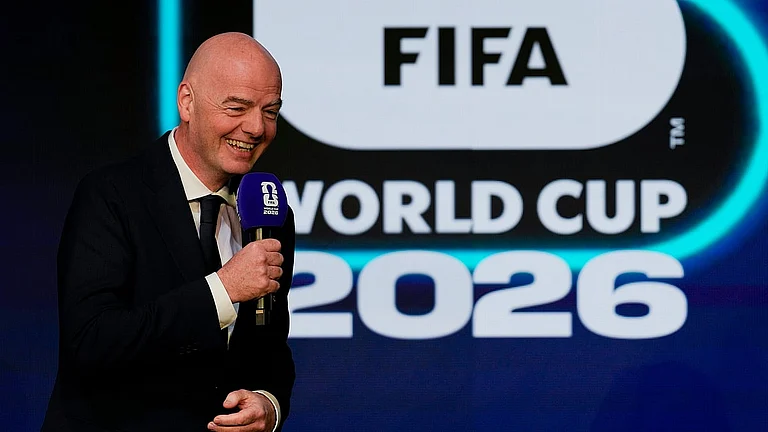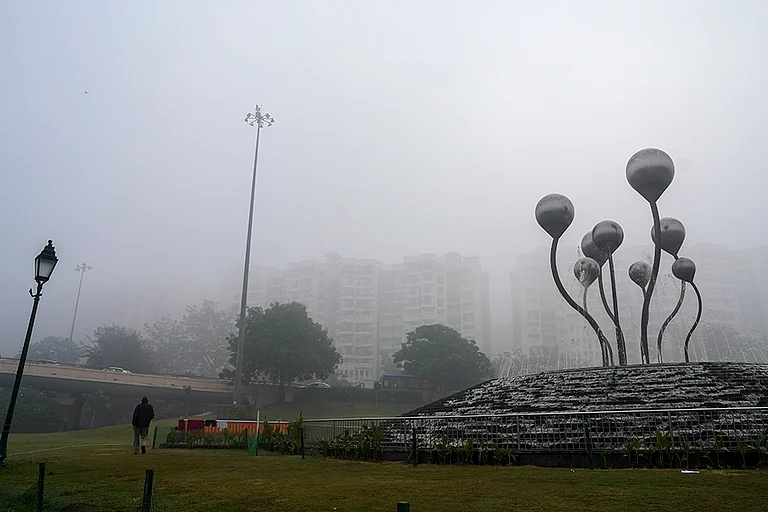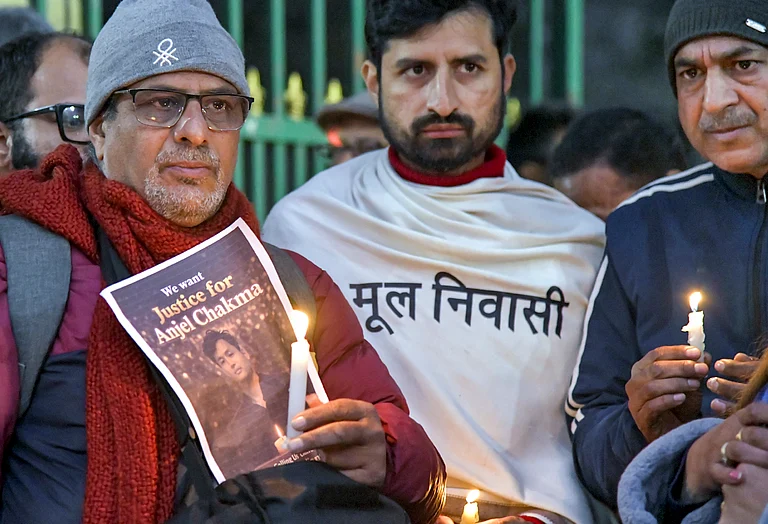There are many days in the year when the world is reminded of the imperiled lives led by journalists across the world.
Like today, May 3, incidentally the 30th World Press Freedom Day. The day is observed worldwide in a bid to raise awareness of the importance of a free press and also to remind governments globally of their duty to respect and uphold the right to freedom of expression, a universal right enshrined under Article 19 of 1948 of the Universal Declaration of Human Rights, to which India is a signatory. In fact, the Indian Constitution is believed to be greatly influenced by the historic document.
Protecting journalists is part of UN's 2030 Agenda for Sustainable Development to which India is also a signatory. In November last year while observing the International Day to End Impunity for Crimes Against Journalists, the United Nations celebrated the 10th anniversary of its Plan of Action on the Safety of Journalists and the Issue of Impunity.
And yet, when it comes to protecting journalists, India has not been doing very well over the years.
In 2021, at least four journalists in India were ‘murdered’ for their work, while six were detained on ‘anti-state charges’, as per the Committee to Protect Journalists report from the year. With 293 journalists jailed globally in 2021, India has most journalists ‘murdered’ for their work. It isn’t just threat to life but also the threat of institutional incarceration, often initiated by state machinery that has become a potent pitfall for journalists in India, especially those working in regional or independent media.
Deteriorating free press
An independent and free press is the hallmark of any modern-day democracy. In June last year, Reporters Without Borders (RSF) released its latest Press Freedom Index, a global metric to gauge the level of freedom and protection of press across nations. India ranked 150th out of 180 countries. According to RSF, India is among the five most dangerous countries for journalists in the world right now after Mexico, Afghanistan, and Yemen, and just before Pakistan. As per the UNESCO observatory, nearly 45 journalists were killed in India between 2010 to 2022. The Global Impunity Index 2021 by CPJ also positioned India 12th on their index where journalists are murdered, and their killers go free. India topped the chart with the highest number of cases filed against journalists during Covid-19.
Lasr year on World Press Freedom Day in May, ten human rights watch organisations came forward to claim that the Indian government was increasingly targeting journalists and online critics for speaking against the government or questioning its policies.
For a nation dubbed as the world’s biggest democracy, this is not good news.
In recent months, raids and searches in offices of prominent news portals and homes of some journalists and the confiscation of their personal computers by Delhi Police authorities have brought the question of press freedom back into news headlines and social media feeds.
Last year, homes of The Wire’s founders and a senior editor were raided by cops after the news portal retracted an erroneous story it had previously published involving Meta and BJP IT cell chief Amit Malviya. The raids and seizure of property have been widely decried on social media with critics blaming the policies of the BJP government. This year, the offices of the BBC in Delhi were raided by the Income Tax department, conspicuously following the release of a controversial documentary on Prime Minister Narendra Modi which the government has banned from being broadcast in India.
The latest prison census data by CPJ released in 2022 showed that seven journalists in jail, a record high for the second consecutive year since 1992.
In fact, press freedom has taken a beating in the past two decades. The World Press Freedom Index published in 2002 positioned India at 80. India’s ranking was on a continuous decline since 2010. The ruling parties are often accused of polarising the media landscape and punishing those who refuse to toe their lines.
And yet, the erosion of free and independent media in India is not a new phenomenon. While the BJP government's record with press freedom has been reaching new lows, previous governments have not spared the press either.
In fact, it began immediately after Independence and has been happening for decades with many political parties in their own ways tried to tamper with or subvert press freedom to suit their own political needs.
The Congress years
Perhaps the biggest blot on India’s press freedom came in 1975 when Indira Gandhi clamped down on the media and announced the Emergency, suspending most civil liberties including freedom of the press. The government disconnected electricity to the newspaper offices on the night of June 25, 1975, when the Emergency was imposed. ‘Motherland’ was the only newspaper in the country that in its edition published on 26 June informed people about the emergency but also about the overnight arrests.
The era saw hundreds of journalists arrested for questioning the government or reporting on stories that were not approved by its press bodies. It also saw newspapers go out of circulation. Many publications like Janata, Himmat, Sadhana, Frontier, Swarajya among others were severely impacted. But the media resisted. Newspapers like The Indian Express and The Stateman were the first to protest by putting out empty spaces in their editorial pages to register their dissent. Others soon followed.
While the right to free press was restored after 1977 when the Emergency was lifted, the period set a new precedent for media censorship and also revealed the fragility of the Indian media.
It was in fact Pandit Jawaharlal Nehru who moved the 1st amendment to the Indian constitution in 1951, which as per clause 2 of article19, imposed “reasonable restrictions” on press freedom. The unpopular Press (Objectionable Matter) Act, 1951 was passed by Nehru by way of legitimising his attempts to “regulate” press freedom.
Further, the arrest of poet and lyricist Majrooh Sultanpuri for reportedly writing a poem criticising Nehru was also seen as an assault on freedom of expression. As per reports, a certain column in a leading newspaper was shelved as its author was too critical of Nehru. The Nehru government also got magazines like Cross Roads and even bypassed the Supreme Court in doing so by using the 1951 Press act.
‘Secular’ parties and media censorship
Since coming to power, the BJP often finds itself in the dock for subverting press freedom and independent media.
Leaders who are at the forefront of such criticism often don’t shy away from curbing press freedom when it comes to their own ballparks.
Trinamool Congress chief Mamata Banerjee Banerjee, who had questioned the government over the arrests of journalists like Zubair and Setalvad, and has consistently attacked the BJP for clamping down on the media, has herself been accused of muzzling press freedom in West Bengal several times ever since she came to power in 2011.
In 2021, the editor of the noted Bengali newspaper Anandabazar Patrika, resigned four days after Banerjee accused the 98-year-old daily of showing the state government in poor light. The former editor was even summoned by Kolkata Police for allegedly publishing fake news for which he never showed.
In April 2018, the Indian Journalists Union (IJU) put out a strongly worded condemnation of the attack on two journalists, allegedly by goons working for TMC in 24 Paraganas District in West Bengal. The attack was widely publicised.
Not just reporters and commentators but also political cartoonists, satirists, and photojournalists who together form the gamut of the mediascape have also not escaped the wrath of ruling parties.
April 2012, Kolkata police arrested a city based academic for allegedly sharing cartoons ridiculing Banerjee by email. In the same year 2012, Kanpur-based anti-graft cartoonist and free speech campaigner Aseem Trivedi was arrested by the Mumbai police for displaying cartoons on his website and Facebook page depicting the Parliament insinuating corruption in high places. He was even slapped with sedition charges. Referring to the incident, India’s then I&B minister Ambika Soni told reporters that cartoonists "should stay within constitutional parameters”. This was a time when Congress was mired in corruption controversies and the joke obviously did not sit well.
At the time, foreign media portals like The Guardian had reported that the “beleaguered government of the prime minister, Manmohan Singh” had temporarily blocked a number of Twitter accounts that were allegedly critical of the government. Several Congress ministers had also reportedly responded angrily to foreign media articles that criticised Singh’s record as PM.
Uttar Pradesh today has become one of the worst states for journalists, especially those working in regional, small scale or vernacular media outlets. In 2019, there were reports that journalists had been locked up in a room in Uttar Pradesh’s Moradabad to prevent them from accompanying Chief Minister Yogi Adityanath during an inspection of a public hospital. The incident raised questions on the impunity of the state government for treating journalists like a herd of cattle. A month before that, the arrest of Delhi-based journalist, Prashant Kanojia by UP Police for “objectionable” material against Adityanath on social media had caused a stir. Kanojia was released after the intervention of the Supreme Court.
But such abuses were reportedly common during the Samajwadi Party as well as the Bahujan Samajwadi Party years.
In the Akhilesh Yadav government, for instance, the alleged killing of Shahjahanpur-based freelance journalist Jagendra Singh caused huge outrage. Singh was allegedly murdered for helping a woman file a case after she accused then-Samajwadi Party minister Ram Murti Verma of raping her at a government guesthouse in Shahjahanpur. As per reports, Singh was allegedly beaten up and set on fire. Police however claimed that they had gone to arrest Singh for kidnapping and that he set himself on fire.
Arrests and attacks are not the only way to curb press freedom. The Nitish Kumar government in Bihar, for instance, maintains a close relationship with the media by providing large sums of money in government advertising to media outlets, thus making them dependent on government funds for revenue. A report in Caravan noted that this impacted the quality of news when it came to reporting against the Nitish Kumar government in Bihar and may have even led to reduction in negative reporting before the BJP came and disturbed the balance. It quoted senior Patna-based journalist Amarnath Jha who said that once the companies became dependent on the government for revenues, it had to relinquish all editorial control.
In June 2021, a journalist in Telangana was arrested while he was out grocery shopping after he published stories against the ruling TRS. A critic of the TRS government led by KCR, Raghu Ramakrishna’s arrest caused widespread hue and cry in the state.
While Left parties have maintained a better record at preserving press freedom, members of Left parties have been known to lose their cool on the media. The Pinarayi Vijayan government did a U-Turn on amending the Kerala Police Act that would allow it to prosecute free speech after an immense row over the proposition. Vijayan’s decision had come at a time when the media was reporting on several high-profile cases involving CPI(M) leaders and the Vijayan government. In November 2020, Vijayan had to clarify that the police act amendments will not affect press freedom. Decades ago, journalists in Kerala have been attacked and harassed after allegations about Kerala Industries Minister P.K. Kunhalikkutty's involvement in a sex racket surfaced.
Attacks on journalists and freedom of press are interlinked. With no real bodies to preserve freedom of press, journalists often end up risking their lives just for or in order to do their jobs. Arresting journalists on spurious charges, escalating attacks on civil society, not defending the rights and dignity of journalists in the face of abuse and physical harm might bring short-term political gains for a political party but it has a devastating impact on any democratic country’s commitment to protecting the liberties and freedoms of its citizens. Press freedom in India has sustained many onslaughts including the Emergency. But will it survive the current onslaught?
A curious thing about freedom of press in India is that it is not explicitly mentioned in the Constitution’s Article 19(1) which deals with fundamental rights and freedoms. According to Bhimrao Ambedkar, the Chairman of the Constitutional Drafting Committee, freedom of press did not have to be a separately mentioned fundamental right as the press was not a separate entity with rights but was entitled to be treated just like any other citizen with fundamental rights. So the fundamental right of the press to freedom of expression would be the same the fundamental right of a citizen.
In that, perhaps what the Constitution is trying to say is that press of a nation is only as free as its people. Which makes the question of press freedom even more potent. If the freedom of press is the same as freedom of expression, the absence of the former is not just a problem for the media industry but a problem for everyone.


























